This is the third post in a series that began here and continued here.
With five days to go before the first one-night Democratic presidential primary debate in Houston, nearly every polling outlet took it upon themselves to release a new poll in the past week. This debate will, for the first time, feature all the top candidates on the same stage, allowing would-be voters to directly compare floundering front-runner Joe Biden to surging runner-up Elizabeth Warren for the first time. Flat-lining Bernie Sanders will be there as well, plus the collapsing Kamala Harris, meager Pete Buttigieg, and five additional also-rans (also-runs?) who are looking for a breakout moment of lightning to elevate their campaigns. El Paso appears not to have launched Beto O’Rourke as many expected, the second debate couldn’t get Cory Booker off the ground, and the media’s determination to pretend Andrew Yang doesn’t exist is helping keep him in a firm sixth place. It has to be believed that Julian Castro and Amy Klobuchar are running for Vice President at this stage.
Where do I get all these adjectives? The data, of course. See the prior posts for an understanding of this methodology and why it’s the most reasonable way to look at polling information, comparing apples to apples. We have two new polls joining the graphs, further muddying the waters, having released their second polls since my call on the functional opening of the campaign (the end of May). These are USA Today/Suffolk, which released a poll dating from June 15th before their recent August 25th entry, showing a long view of the summer session. And IBD/TIPP, which looks to be a frequent pollster with data from August 1st and August 30th, giving a shorter snapshot.
Some limited analysis of newer graphs will come after the illustrations below – they pretty much speak for themselves at this point in showing the candidates’ general directions going into possibly the most pivotal debate of the campaign before Iowa.
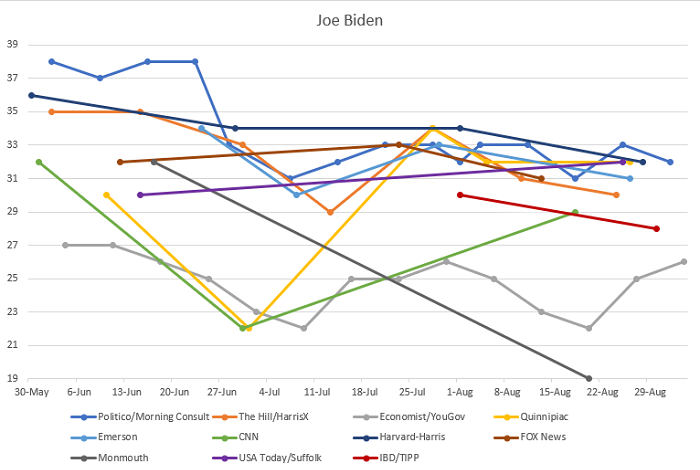
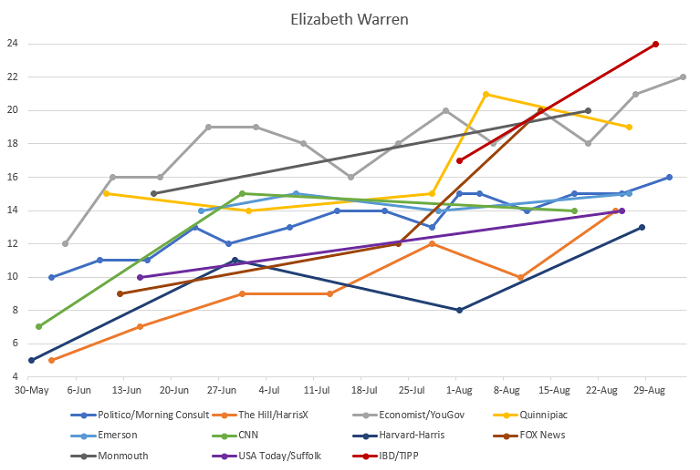
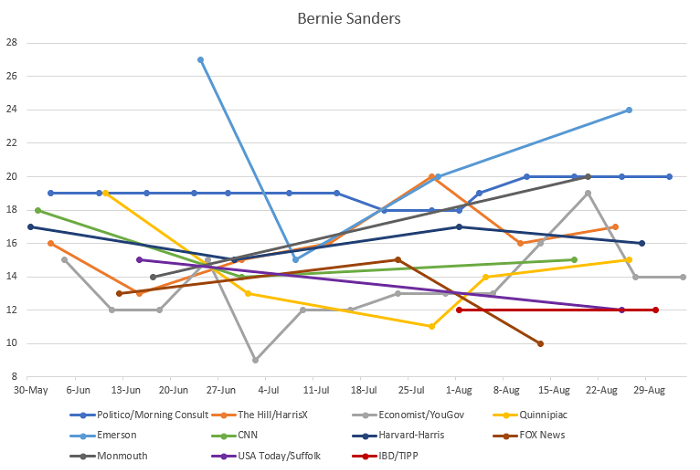
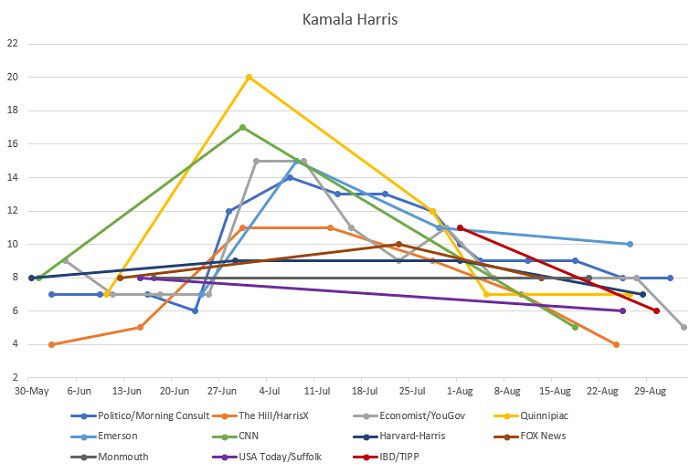
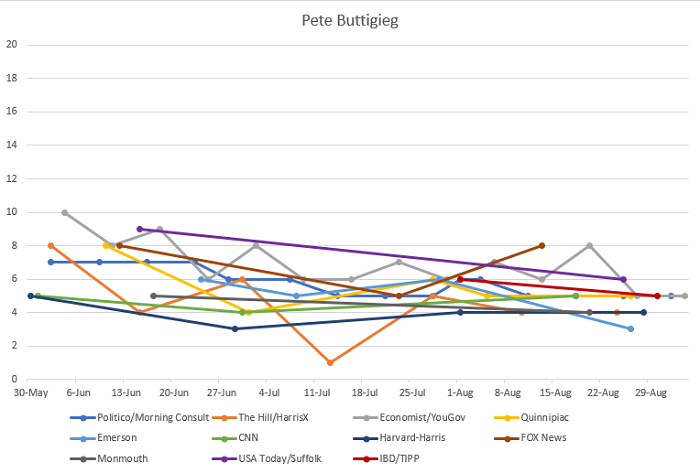
Given that each graph covers a 20-point spectrum, these graphs remain more useful for measuring momentum than overall standing. That said, given that the Iowa Caucus is in January and not next week, I think most of us would rather have Warren’s graph than Biden’s, even though she trails him overall. There’s a long race ahead of us and this data all predates Biden standing on a stage with blood coming out of his eyes.
I’m going to renew another graph I previewed last time, the (Warren + Sanders) cumulative graph head-to-head with Biden. Unlike the graphs above, these have the exact same Y-axis range (19% to 42%), so the comparison is more direct:
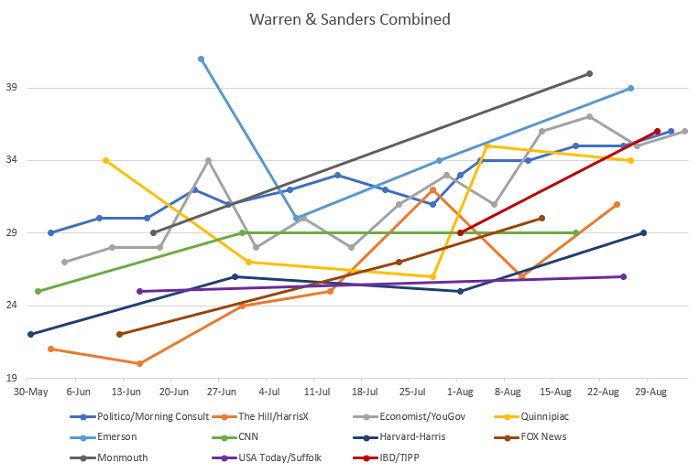
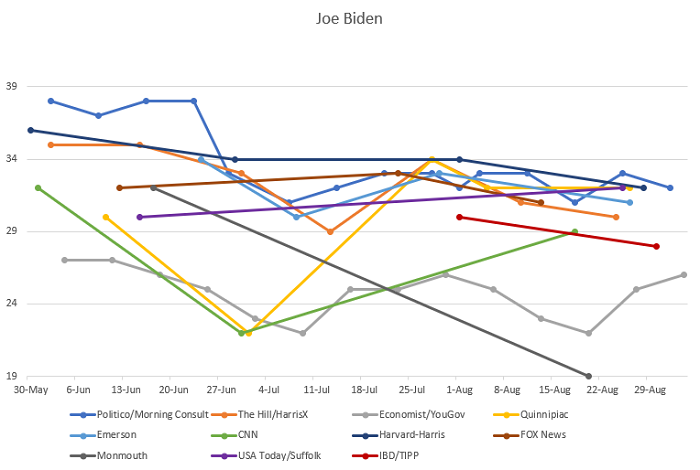
The best way to read these is to focus on the 34% line. Biden hasn’t matched the 34% line once since August 1st in any poll. Six polls have Warren + Sanders combined at or above that threshold since August 20th. Meanwhile, only one poll has W+S below 29% in its most recent iteration, while three have Biden in that standing. Admittedly, Sanders voters will not necessarily all jump to Warren or vice versa, but overall support for a progressive candidate who overtly opposes the status quo seems to have surpassed Team Biden.
Finally, I will offer a slightly editorializing graph, which is my critique of Politico/Morning Consult, which I think is utilizing a deeply flawed and cynical methodology. This most prolific pollster essentially shows all candidates as flat since well before the second debate, which I think reflects that they are benchmarking all their data to produce a consistent outcome in the race, rather than devising a methodology and letting the chips fall where they may. You can argue that the race is utterly stable and fixed, but I don’t think this reflects the public mood and it’s certainly not how the other polls, on aggregate, read the race. Given that P/MC prolificity gives them a larger voice in cumulative poll numbers than any of their rivals, I think this shows that the race may be tipping even more to Warren over Biden if we were to discount their problematic results…
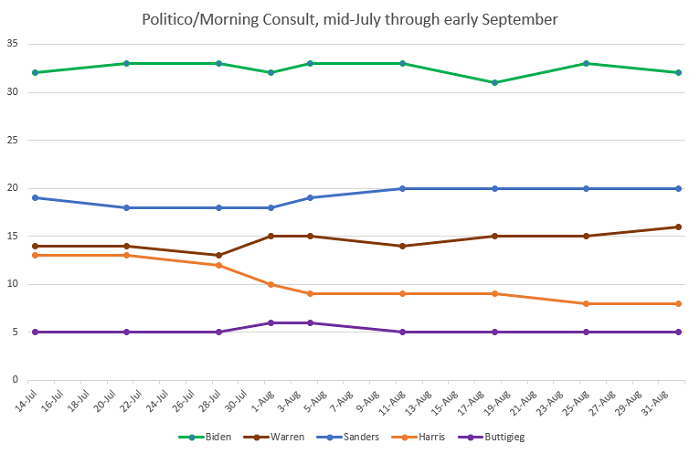
P/MC was always the most bullish poll on Biden (scroll back to the top graph in the series) and continues that distinction to date. They also remain disproportionately bullish on Bernie. It feels very strongly like this poll is just not paying attention to the reality on the ground, preferring to presume they know what the state of the race is and has been for a long time and ensuring their data matches their presumptions. This happens to an extent in every poll, but feels really egregious in this instance.



